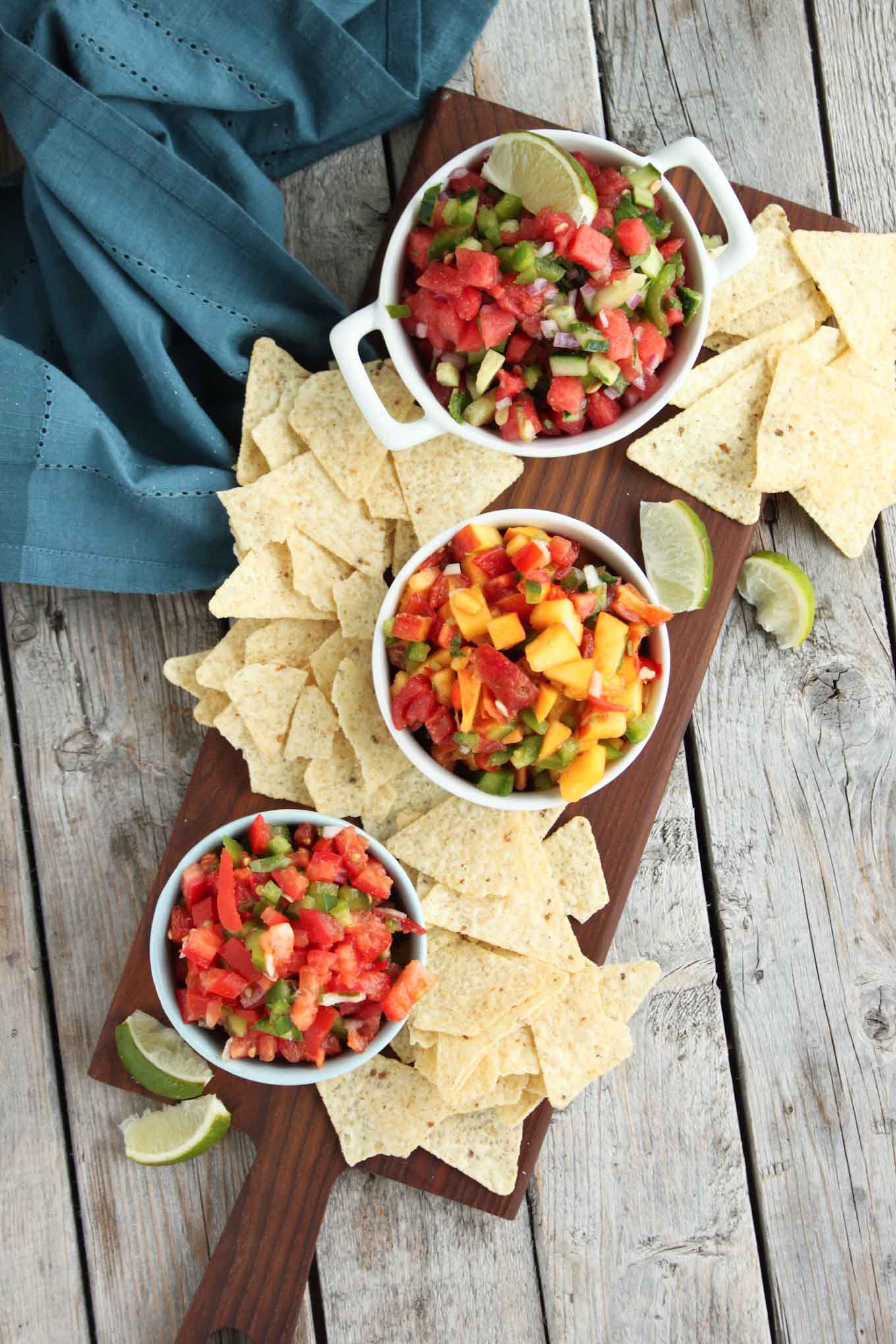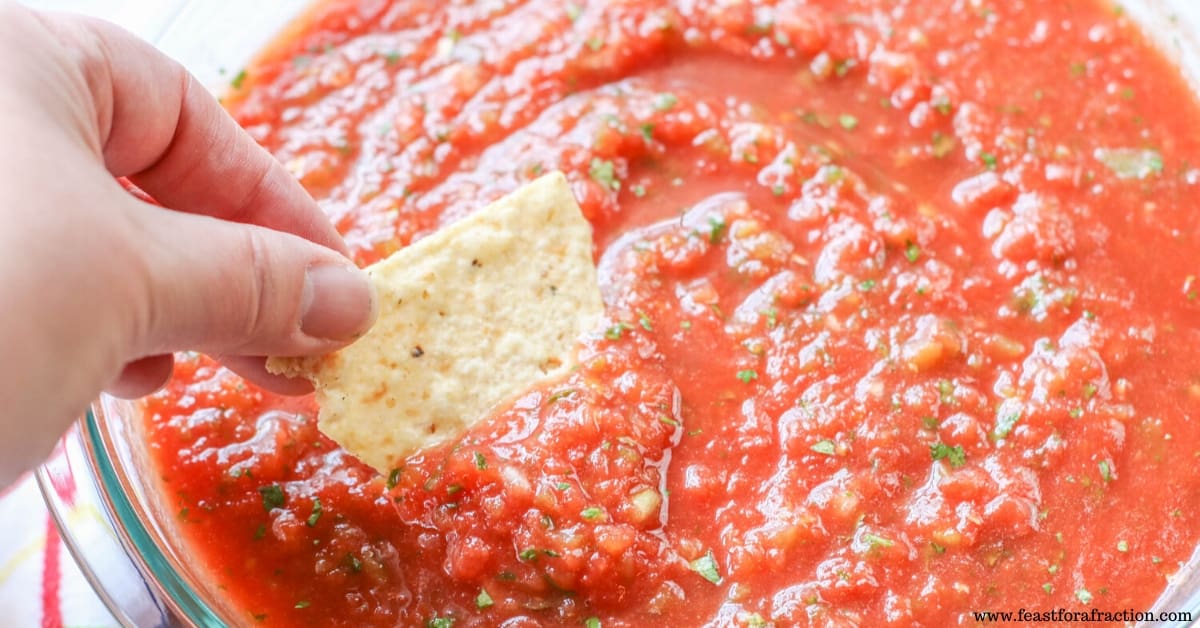Table of Content
Along with the canning items above, you’ll also need a canner, which is a large pot big enough to fill with water and jars. I used my stock pot, the same one I use to make stock or boil spaghetti –yes, that one. It would need to process at 6 pounds of pressure for 20 minutes for pint jars. Now use a canning funnel so you don’t get salsa all over the rims of your jars and fill the hot jars leaving a 1/2 inch headspace.

Home canned salsa should be kept in a cool, dark, dry place. Just a regular cabinet works fine. Not next to the oven, dishwasher, or fridge are the best options. After 12 hours it’s time to check to make sure the jars sealed properly. If a jar hasn’t sealed, put it in the fridge and eat it within 2 weeks.
How Do I Make a Smooth Salsa?
Large slicing tomatoes will produce a thinner, more watery salsa. Do not use tomatoes from dead or frost-killed vines. Poor quality or overripe tomatoes will produce very poor or unsafe salsa. You can use any canning method you're familiar with instead of a water-bath method. I’m planning on making this tomorrow and am unsure how many jars to prepare.
Plus, it makes enough to keep a jar for yourself and share the others with friends or neighbors. Pair with nachos, tacos, or a bowl of tortilla chips, and you'll want to make sure you have enough to last you till Super Bowl season. While the salsa simmers, immerse sterilized jars in hot water to prepare for filling. Pack the cooked salsa into jars before boiling for 35 minutes. Allow the jars to cool and rest for hours before storing. Add just 1/4 cup chopped onion to the bowl.
Fresh Homemade Salsa
Once again, the combination of time and temperature destroys bacteria and creates a tight vacuum seal, so food stays fresh longer. This form of canning uses high temperatures to safely preserve foods that are low in acid such as meat, poultry, vegetables, chili, and seafood. The ones I used in this post are made by Ball, which has been making the most popular jars for canning since 1880. Once you’ve removed them from the water with the tongs and set aside onto a flat surface. Leave the jars undisturbed for 12 to 24 hours. Gently tap the bottom of the jar on a flat surface to remove any air bubbles; this will keep the salsa from spoiling due to trapped air.

And get started on your journey to food self sufficiency today. Learn how to can by checking out our full primer on everything you need to know about water bath canning. Because vinegar and lime juice do not have the same pH levels, they are not interchangeable in equal amounts in this recipe.
How to Can: Homemade Salsa
Boil gently, uncovered, about 1 1/2 hours or until desired consistency, stirring occasionally. Add chile peppers, onions, lime juice, vinegar, tomato paste, garlic, crushed cumin, salt, and black pepper. Return mixture to boiling; reduce heat. Simmer, uncovered, for 10 minutes.
Transfer peeled tomatoes and liquid to a large bowl. Crush tomatoes into small chunks using your hands or a whisk. Paste tomatoes are also ideal when making homemade canned tomato sauce. I wish I could invite all of you over to my house so you could have a bite of this homemade salsa for canning. It might be one of the best things that’s ever come out of my kitchen. Add onion, peppers, and cilantro.
Here’s where you might need a notebook and pencil –or simply print the recipe below. The steps aren’t complicated, but all of them are equally important. Commercial vinegars have to be at a specific acidity level so we know they are safe to use. Next, wipe the rims of the jars with a clean, damp cloth to make sure the rims are clean. You can really use any kind of peppers you want to. Or no peppers at all if that’s your thing.
Below is a USDA tested salsa recipe which you can try. If you do not wish to preserve it, you can consume it as a fresh product. Store it for up to a week in the refrigerator or freeze it for up to one year. Italian plum-style or paste tomatoes, such as Roma, have firmer flesh and produce a thicker salsa. We are Dianna & Alyssa, a mother-daughter duo, and food lovers! We are the stomachs behind all the recipes we share here on In Fine Taste.
Ladle into prepared jars, remove air bubbles, wipe the rims of the jars, and then fit with lids and rings. We cover how to do this extensively in our post on canning diced tomatoes. If it's thicker than you'd like, thin it out with the juice we squeezed out earlier.
This recipe makes a medium salsa–not too hot and a few kicks up from a mild salsa. If you’d rather keep your salsa mild, reducing to a 1/2 cup of jalapenos should work nicely while still giving your salsa a lot of flavor. Hi Deb, you can leave the tomato seeds in, removing them is optional but they do need to be roasted prior to cooking down with the rest of the ingredients.
Wipe rim of jar clean and seal with lid and ring. Taking skins off tomatoes is a breeze! Just cut the tomatoes in half and place them cut side down on a large rimmed cookie sheet. Broil them on high or 5-7 minutes until the skins begin to blister & shrivel. Then, remove tomatoes from oven and easily peel them. I am super picky about salsa too .
Most fresh tomato salsa recipes contain lime juice. However, lime juice does not have adequate acidity to make salsa safe canning. Process your salsa for fifteen minutes. When the processing time is over, turn off the heat, remove the lid to the canner or stockpot, and let everything sit for another five minutes. Then, using a jar lifter remove the jars from the canner or stockpot and place them on the towel. Make sure to leave an inch or two of space between the jars to help them cool.

No comments:
Post a Comment